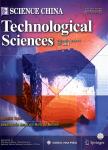Segmentation and classification of high resolution imagery for mapping individual species in a closed canopy,deciduous forest
Segmentation and classification of high resolution imagery for mapping individual species in a closed canopy, deciduous forest作者机构:Department of Geology and GeographyWest Virginia UniversityMorgantown WV 26506-6300USA Biology DepartmentWest Virginia UniversityMorgantown WV 26506USA
出 版 物:《Science China(Technological Sciences)》 (中国科学(技术科学英文版))
年 卷 期:2006年第49卷第Z1期
页 面:128-139页
核心收录:
学科分类:083002[工学-环境工程] 0830[工学-环境科学与工程(可授工学、理学、农学学位)] 08[工学] 09[农学] 0804[工学-仪器科学与技术] 0903[农学-农业资源与环境] 0816[工学-测绘科学与技术] 081602[工学-摄影测量与遥感] 081102[工学-检测技术与自动化装置] 0811[工学-控制科学与工程]
基 金:Financial support from the National Science Foundation(Grant no.DBI-9808312) the West Virginia University Eberly College of Arts and Sciences,and West Virginia View is gratefully acknowledged
主 题:remote sensing, digital forestry, image classification, segmentation.
摘 要:In this paper we investigate the use of a shadow-based delineation program for identifying segments in imagery of a closed canopy, deciduous forest, in West Virginia, USA, as a way to reduce the noise associated with per-pixel classification in forested environments. Shadows typically cluster along the boundaries of trees and therefore can be used to provide a network of nodes for the delineation of segments. A minimum cost path algorithm, where cost is defined as the cumulative sum of brightness values traversed along the connecting route, was used to connect shadow clumps. To test this approach, a series of classifications was undertaken using a multispectral digital aerial image of a six hectare test site and a minimum cost path segmentation. Three species were mapped: oaks, red maple and yellow poplar. The accuracy of an aspatial maximum likelihood classification (termed PERPIXEL classification) was 68.5%, compared to 74.0% for classification using the mean vector of the segments identified with the minimum cost path algorithm (MEAN_SEG), and 78% when the most common class present in the segment is assigned to the entire segment (POSTCLASS_SEG). By comparison, multispectral classification of the multispectral data using the field-mapped polygons of individual trees as segments, produced an accuracy of 82.3% when the mean vector of the polygon was used for classification (MEAN_TREE), and 85.7% when the most common class was assigned to the entire polygon (POSTCLASS_TREE). A moving window-based post-classification majority filter (POSTCLASS_MAJ5BY5) produced an intermediate accuracy value, 73.8%. The minimum cost path segmentation algorithm was found to correctly delineate approximately 28% of the trees. The remaining trees were either segmented, aggregated, or a combination of both segmented and aggregated. Varying the threshold that was used to discriminate shadows appeared to have little effect on the number of correctly delineated trees, or on the overall accu



